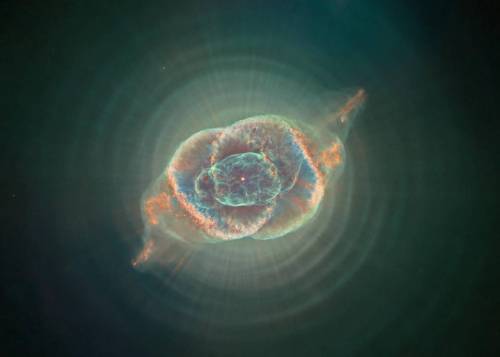

#InternationalCatDay? Try #IntergalacticCatDay.
Check out features of our feline friends that have come to life as interstellar phenomena!
Pictured first, the Cat’s Paw Nebula is located about 4,200-5,500 light-years from Earth – situated in our very own Milky Way Galaxy. It was named for the large, round features that create the impression of a feline footprint and was captured by our Spitzer Space Telescope. After gas and dust inside the nebula collapse to form stars, the stars may in turn heat up the pressurized gas surrounding them. This process causes the gas to expand into space and form the bright red bubbles you see. The green areas show places where radiation from hot stars collided with large molecules called “polycyclic aromatic hydrocarbons,” causing them to fluoresce.
Next, you’ll find the Cat’s Eye Nebula. Residing 3,000 light-years from Earth, the Cat’s Eye represents a brief, yet glorious, phase in the life of a sun-like star. This nebula’s dying central star may have produced the simple, outer pattern of dusty concentric shells by shrugging off outer layers in a series of regular convulsions. To create this view, Hubble Space Telescope archival image data have been reprocessed. Compared to well-known Hubble pictures, the alternative processing strives to sharpen and improve the visibility of details in light and dark areas of the nebula and also applies a more complex color palette. Gazing into the Cat’s Eye, astronomers may well be seeing the fate of our sun, destined to enter its own planetary nebula phase of evolution … in about 5 billion years.
Make sure to follow us on Tumblr for your regular dose of space: http://nasa.tumblr.com.


Комментариев нет:
Отправить комментарий